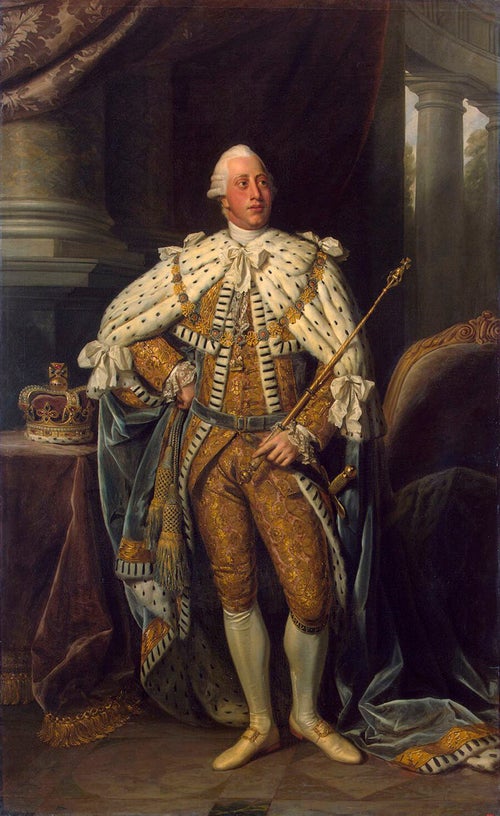After 200 years under lock and key, the letters, diaries and family documents of one of Britain’s most fascinating kings are finally about to emerge from the vaults.
The personal papers of King George III – who was often called ‘the mad king’ - are to be digitized and will available to view online after their release from the Royal Archives in Windsor Castle.
BBC filmmakers were granted extensive access to the material and have produced a historic film for BBC Two, shedding new light on one of Britain’s longest reigning monarchs.
George III – The Genius of the Mad King will air on BBC Two on Monday at 9pm.


He was the last King of America
During George III’s reign, Britain lost its American colonies following the American War of Independence. On 4 July 1776, American leaders issued a Declaration of Independence and the British army was defeated in 1781.
Prior to the defeat, the King had mused: “I cannot help being of opinion that with firmness and perseverance, America will be brought to submission.”
He had a lot of children
The King enjoyed a happy marriage lasting half a century with Charlotte of Mecklenburg-Strelitz.
The couple had 15 children, 13 of whom survived to adulthood. For the first two decades of their marriage, Charlotte was almost constantly pregnant.
In 1811 their eldest son was appointed Prince Regent, amid George III’s increasing bouts of mental illness.
He was known as ‘Mad King George’
The King’s sporadic episodes of mental confusion, which saw him experience mania and occasionally have to be restrained by his staff, are attributed by some experts to a genetic blood disorder called porphyria. Hair taken from George III’s head after his death found it to be laden with arsenic, a poison known to trigger the condition. It is believed the source of the arsenic was James’s Powders – a medicine commonly given to the King – which researchers now believe actually made his condition worse.
Historians at St George’s, University of London, however, have speculated that George III may have suffered from bipolar disorder.
He was mocked with the nickname ‘Farmer George’
The King longed for a simple life and preferred to spend his time on his country estates where he enjoyed cooking and developed an interest in farming.
Thrifty George III ran one farm at Richmond and three at Windsor, where he bred battle and sheep, and was roundly mocked for having such decidedly-unregal interests.
He was one of Britain’s longest reigning monarchs
George III died at Windsor Castle on 29 January 1820, after a reign of 59 years.
His reign was surpassed by that of his granddaughter, Queen Victoria, who reigned for 63 years and present monarch Queen Elizabeth II, who has reigned from 1952.